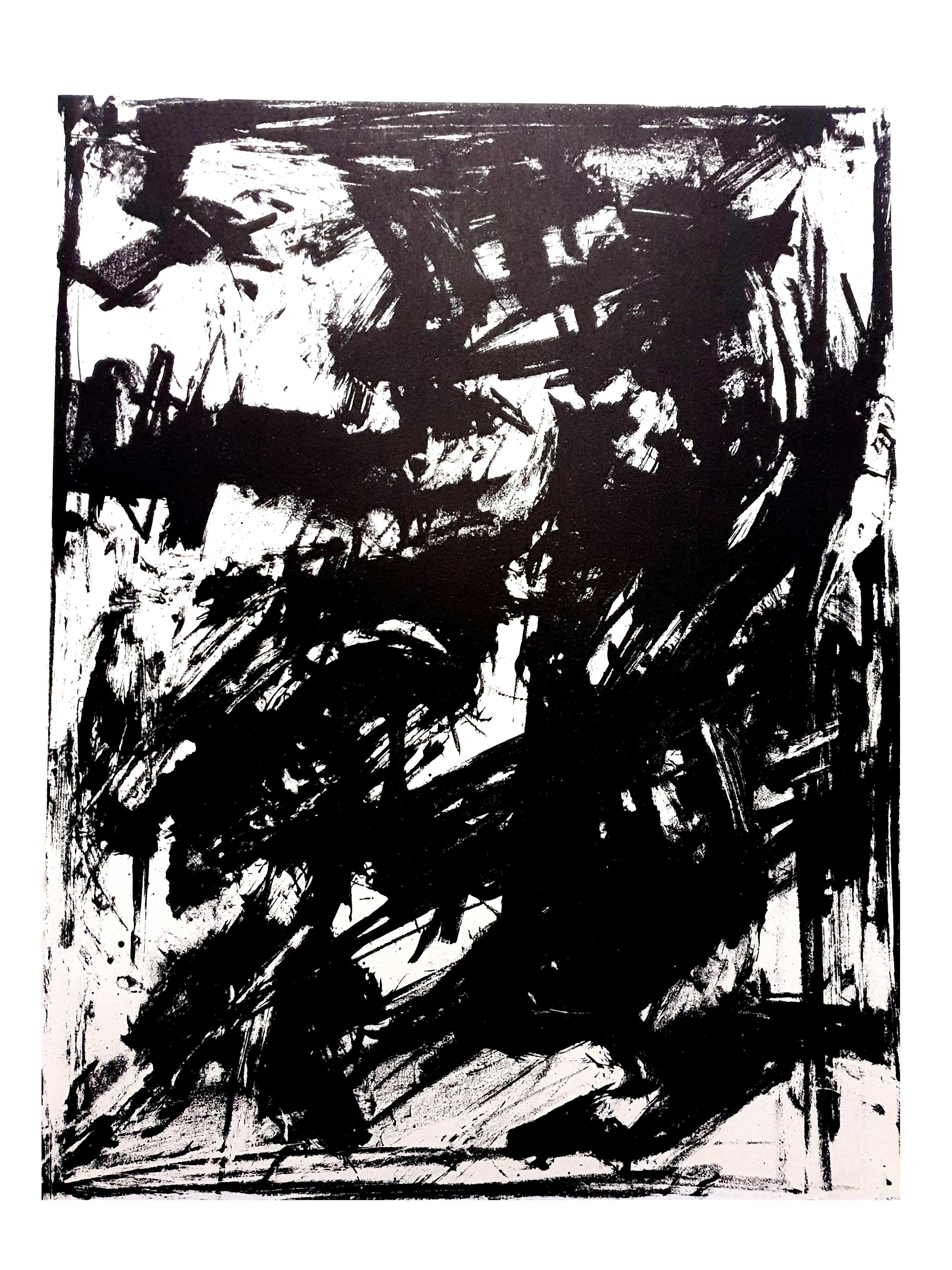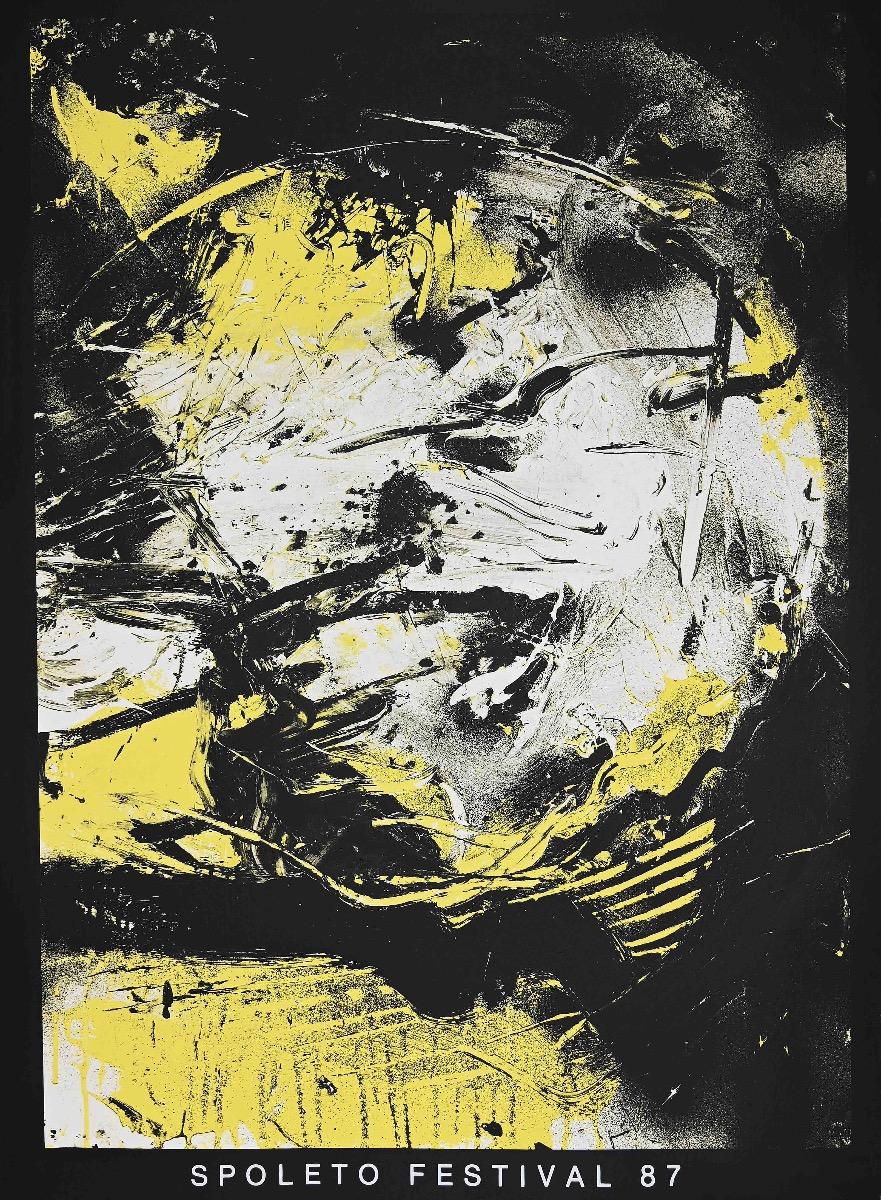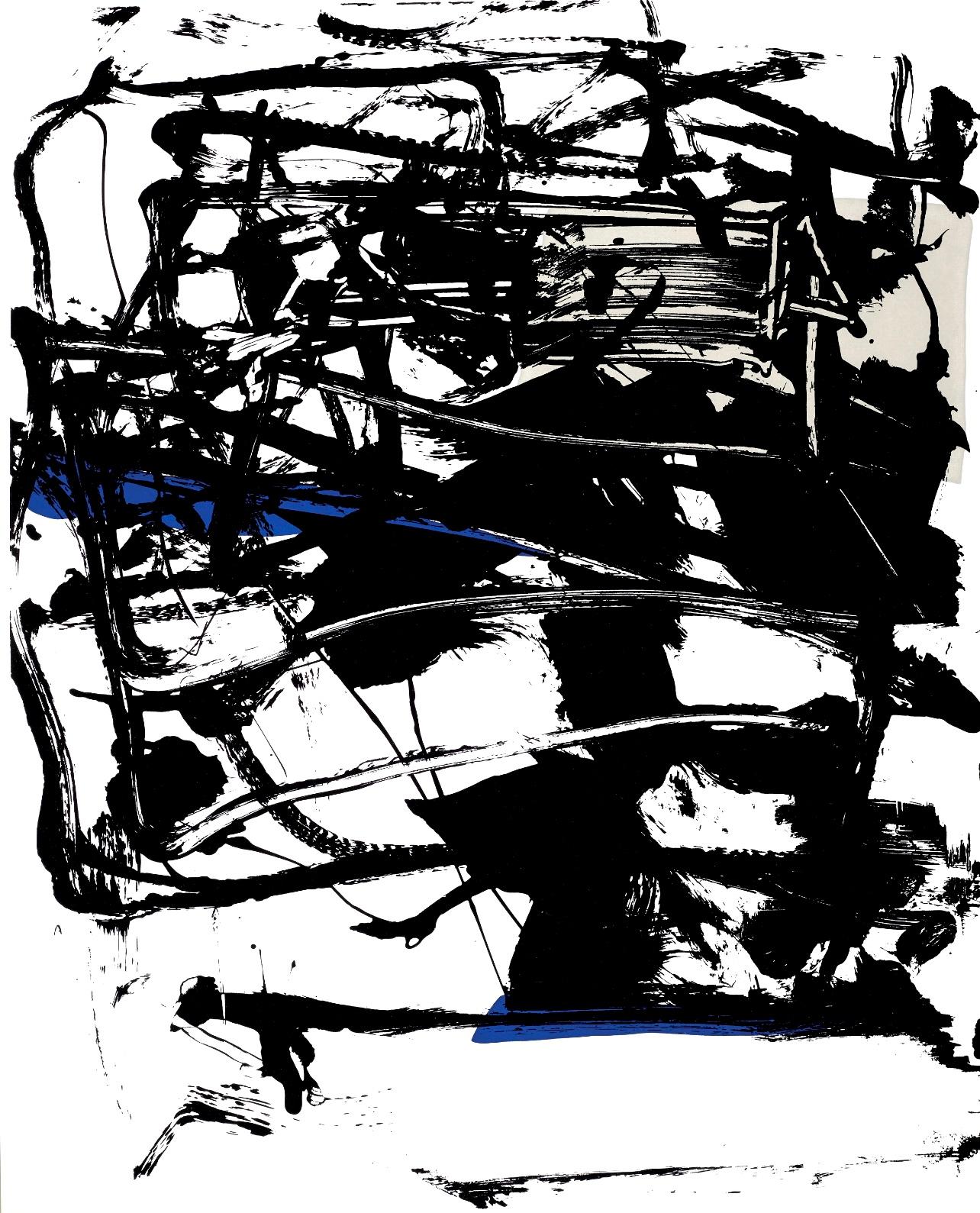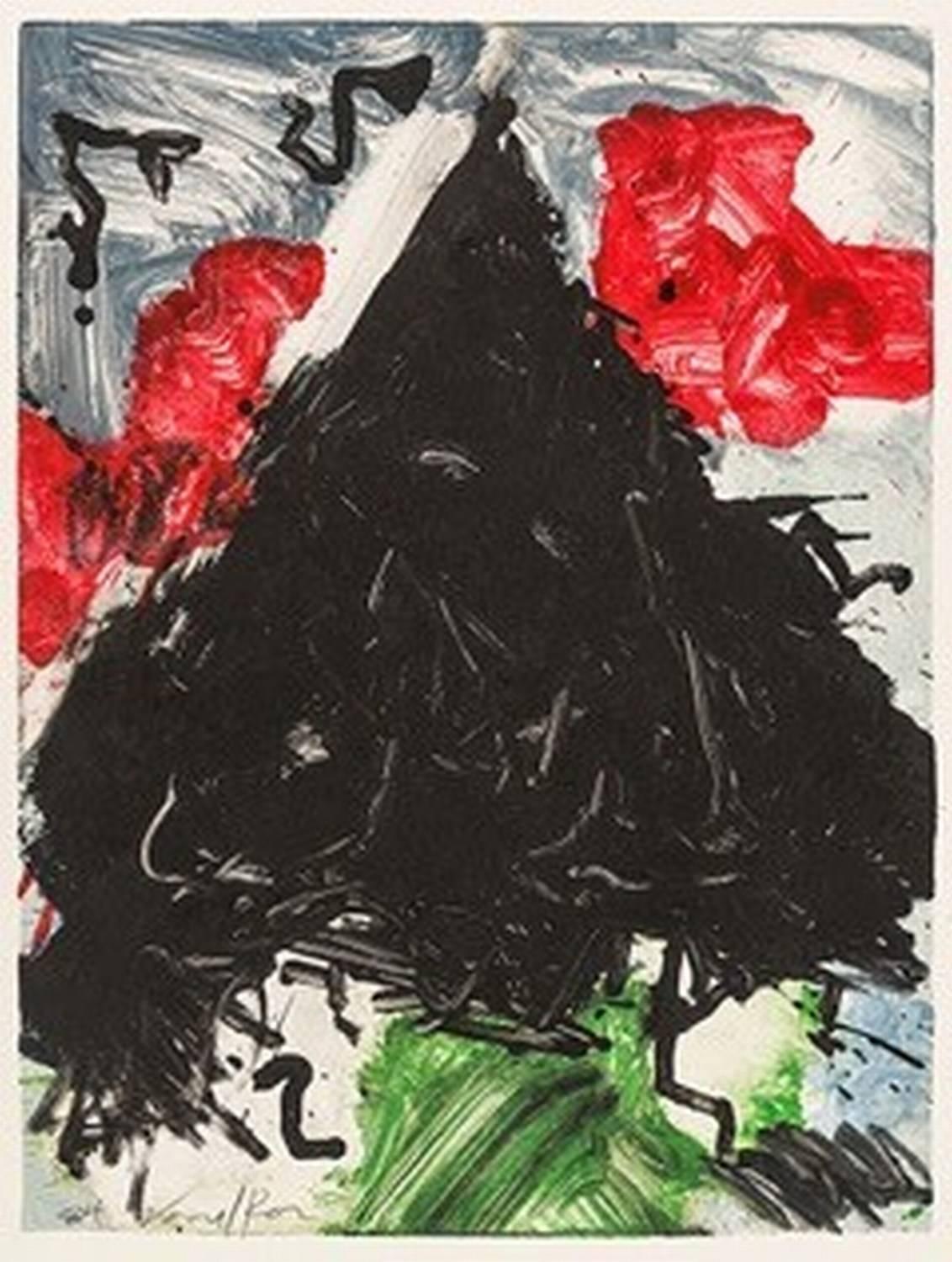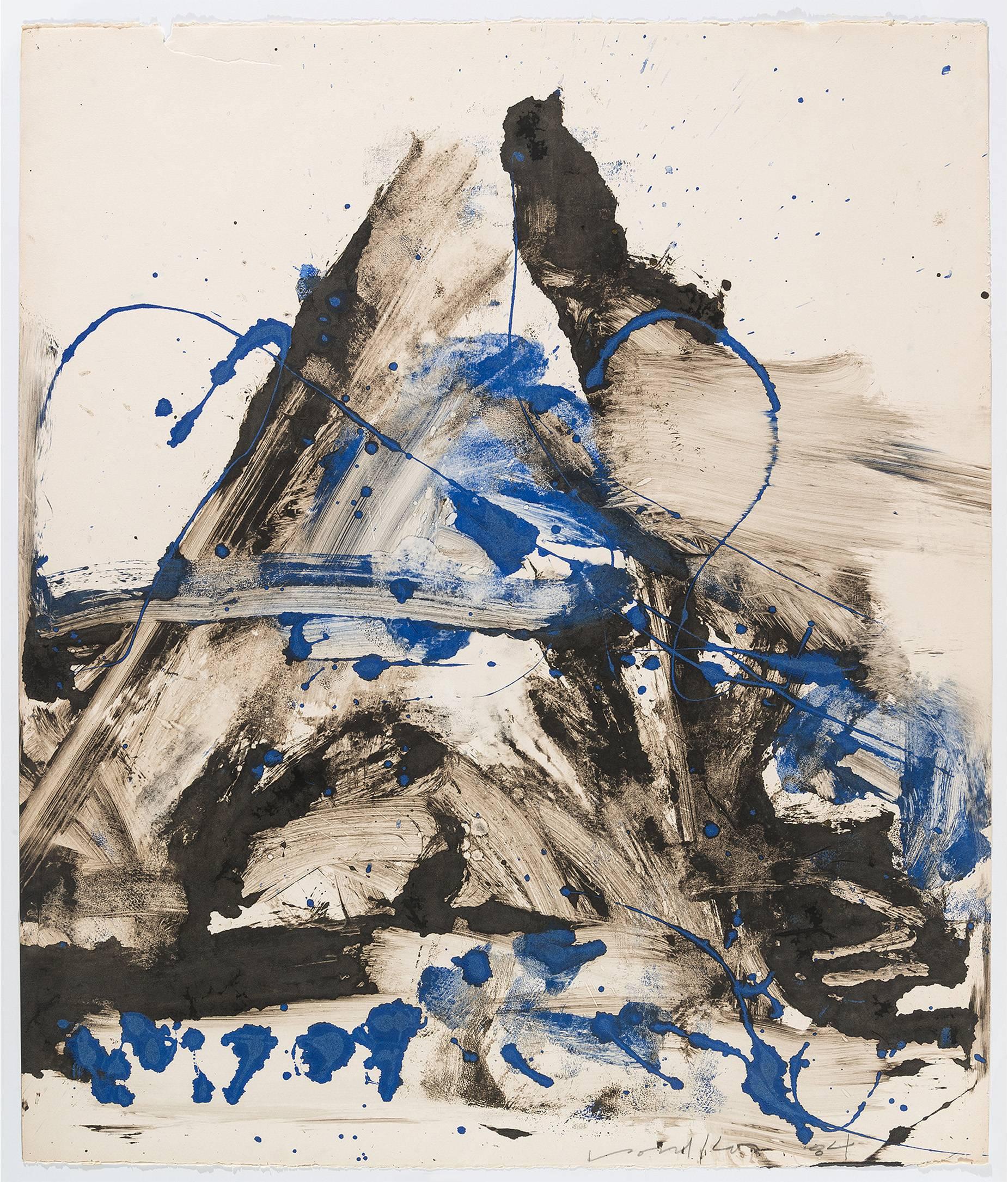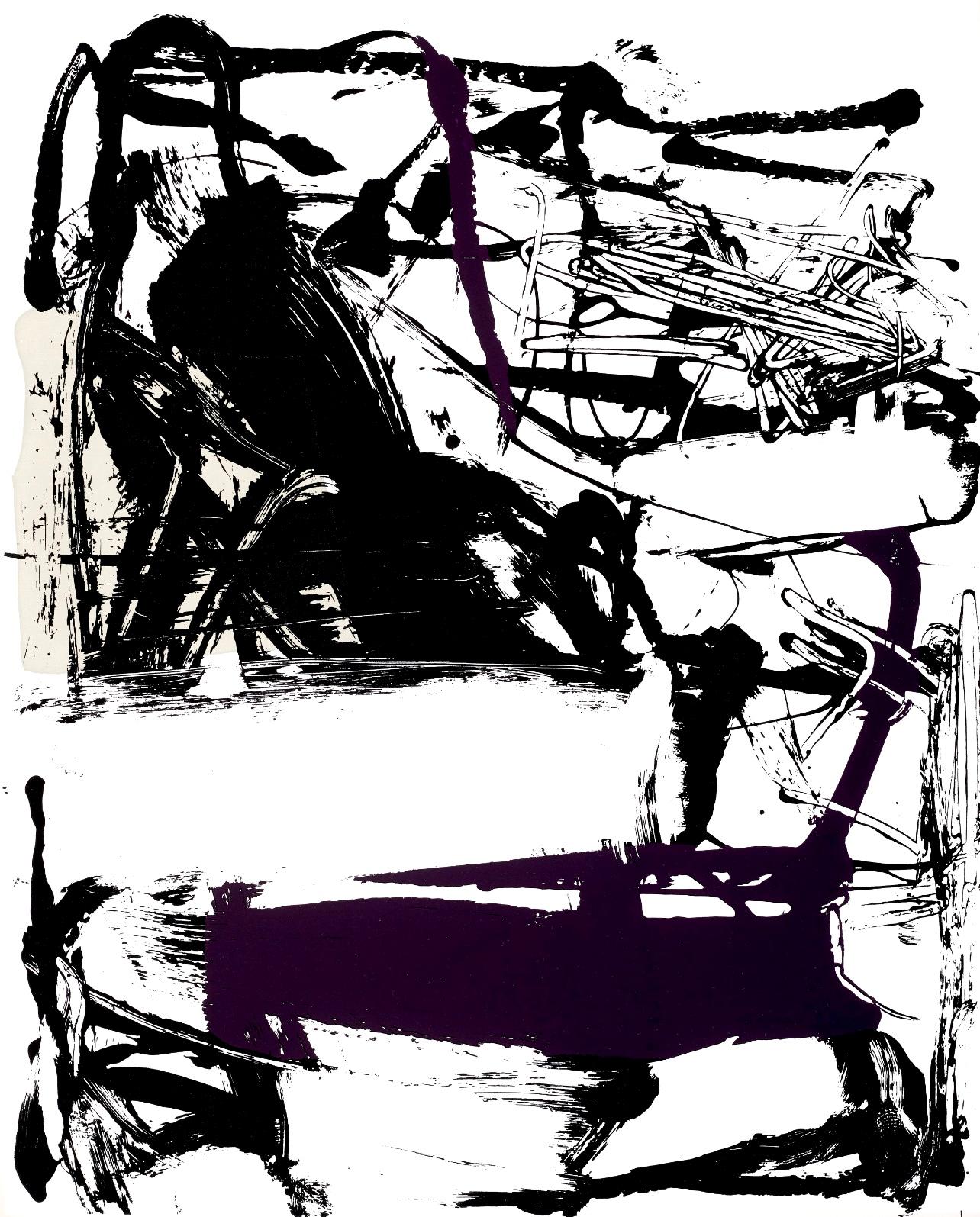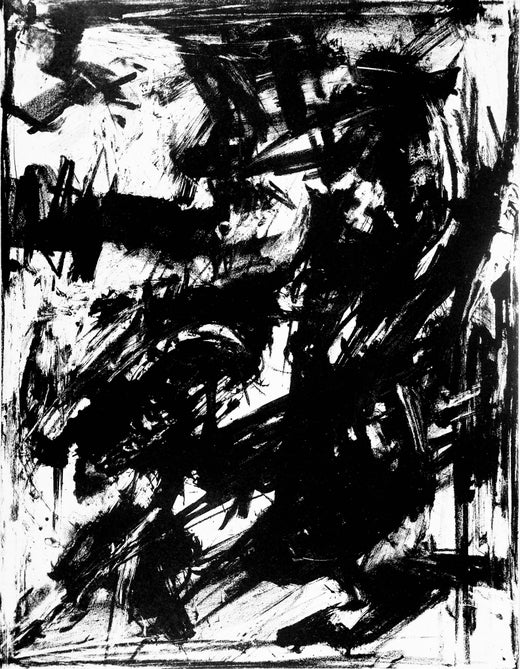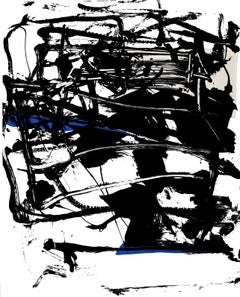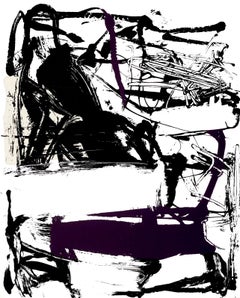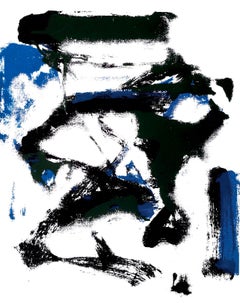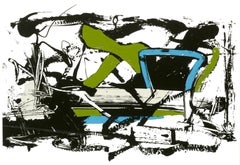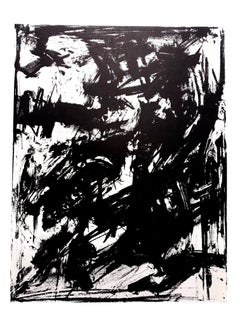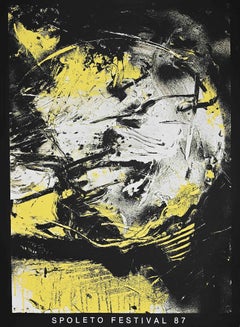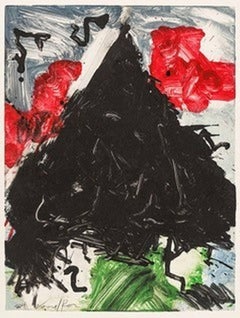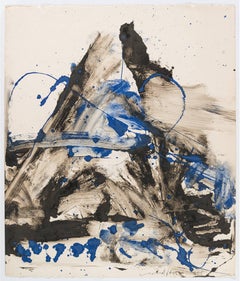This exquisite lithograph by Emilio Vedova (1919–2006), titled Intolleranza (Intolerance), from the album XXe Siecle, Nouvelle serie, XXIIe Annee, N° 16, Mai 1961, originates from the 1961 edition published by Societe Internationale dArt XXe Siecle, Paris, under the direction of Gualtieri di San Lazzaro, editeur, Paris, and printed by Mourlot Freres, Paris, 1961. A compelling example of Vedovas explosive gestural abstraction, this work reflects the emotional intensity and political urgency that define his most celebrated period.
Executed as a lithograph on velin paper, this work measures 12.5 x 9.75 inches. Unsigned and unnumbered as issued. Printed by Mourlot Freres, Paris, one of the foremost ateliers of the 20th century.
Artwork Details:
Artist: Emilio Vedova (1919–2006)
Title: Intolleranza (Intolerance)
Medium: Lithograph on velin paper
Dimensions: 12.5 x 9.75 inches (31.75 x 24.77 cm)
Inscription: Unsigned and unnumbered as issued
Date: 1961
Publisher: Societe Internationale dArt XXe Siecle, Paris, under the direction of Gualtieri di San Lazzaro, editeur, Paris
Printer: Mourlot Freres, Paris
Condition: Well preserved, consistent with age and medium
Provenance: From the album XXe Siecle, Nouvelle serie, XXIIe Annee, N° 16, Mai 1961, published by Societe Internationale dArt XXe Siecle, Paris; printed by Mourlot Freres, Paris, 1961
About the Publication:
Gualtieri di San Lazzaros XXe Siecle (Twentieth Century) was one of the most influential art journals of the modern era, founded in Paris in 1938 to unite the greatest painters, sculptors, and writers of the 20th century. San Lazzaro, a visionary editor and champion of modernism, believed in the synthesis of art and literature, creating a publication that served as both a scholarly platform and a collectors object. Across its many issues, XXe Siecle featured original lithographs, pochoirs, linocuts, and wood engravings by leading modern masters—including Picasso, Matisse, Chagall, Miro, Braque, Leger, Kandinsky, and Calder—printed by premier ateliers such as Mourlot, Atelier Jacomet, and Lacouriere. The double and special issues of the early 1960s mark one of the journals most dynamic periods, reflecting the rise of postwar abstraction, European Informel, and the global avant-garde. Today, XXe Siecle remains an essential reference point in 20th century art history, prized by collectors, museums, and scholars worldwide.
About the Artist:
Emilio Vedova (1919–2006) was a pioneering Italian painter and one of the most powerful voices in postwar European abstraction, celebrated for his fiercely gestural canvases, explosive spatial constructions, and politically charged visual language that placed him in dialogue with modern titans such as Pablo Picasso, Alexander Calder, Alberto Giacometti, Salvador Dali, Joan Miro, Wassily Kandinsky, Marcel Duchamp, and Man Ray; emerging from the anti Fascist artistic circles of Venice, Vedova became a central architect of the Art Informel and European Abstract Expressionist movements, fusing the emotional turbulence of German Expressionism with the radical fragmentation of Futurism and the structural tension of Constructivism to create paintings that pulse with urgency, conflict, and existential depth; as a member of the Fronte Nuovo delle Arti and later the Gruppo degli Otto, he collaborated and exhibited alongside Afro, Renato Birolli, Giuseppe Santomaso, Mattia Moreni, Antonio Corpora, and Ennio Morlotti, and soon established himself as one of the defining forces of modern Italian art; his breakthrough came with the Cycles of Protest and Plurimi, monumental kinetic structures of painted panels that expanded abstraction into sculptural space, challenging the boundary between painting and environment and placing viewers inside the emotional and political turbulence that fueled his imagery; Vedovas bold visual vocabulary defined by violent strokes of black cutting through white light, jagged spatial tensions, dissonant chromatic attacks, and a near musical rhythm of gesture anticipated and deeply influenced later generations of politically engaged, gestural, and conceptual artists, including Anselm Kiefer, Georg Baselitz, Julian Schnabel, William Kentridge, and numerous contemporary Italian abstractionists who continue to investigate trauma, memory, and collective identity through raw painterly force; a frequent participant in the Venice Biennale winning the Grand Prize for Painting in 1960 Vedova also taught at major institutions including the Salzburg Summer Academy, where he mentored emerging artists from around the world and helped shape the language of late 20th century abstraction; his work has been exhibited internationally and is represented in major museum collections such as the Peggy Guggenheim Collection in Venice, the Museum of Modern Art in New York, the Centre Pompidou in Paris, the Museo Reina Sofia in Madrid, the Stedelijk Museum in Amsterdam, the Tate in London, the National Gallery of Modern Art in Rome, and prominent university, corporate, and private collections across Europe, Asia, and the Americas, reaffirming his stature as a global cultural force; consistently celebrated for his unflinching engagement with the social, political, and psychological ruptures of the modern world, Vedova remains an essential figure for scholars, curators, and collectors seeking the intersection of historical urgency and uncompromising expressive power; his auction market reflects this enduring importance, with his highest recorded sale achieved when the monumental painting Tensione realized 1,032,068 USD at Christies Milan on May 30, 2007.
Emilio Vedova, XXe Siecle 1961, Vedova lithograph, Intolleranza.
